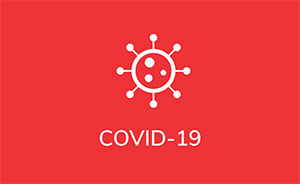The Bottom Line
Chronic Lymphocytic Leukemia (CLL) patients infected with SARS-CoV-2 last year had non-lethal outcomes if they were treated appropriately with anti-viral medications. This may have also been due to the Omicron subvariants mutating to become less virulent (meaning severe or harmful) during this time.
Who Performed the Research
The three authors of the abstract are:
- Yotam Bronstein is a physician at Tel Aviv Sourasky Medical Center’s Hematology Division, Tel Aviv, Israel
- Shai Levi is affiliated with the Tel Aviv Sourasky Medical Center’s Hematology Division; and,
- Yair Herishanu is the director of The Research Laboratory for CLL Cell Biology, Hematology Division at Tel Aviv Sourasky Medical Center. Dr. Herishanu also is at the Sackler Faculty of Medicine, Tel Aviv University.
Where Was It Presented
The abstract was published in Blood on November 15, 2022, and as a poster displayed at the December 2022 ASH meeting.
Background
All of those diagnosed with CLL or SLL have a weakened (or impaired) immune system due to having a cancer of the immune system. This makes those with CLL / SLL more vulnerable than the general population to needing hospitalization if infected with the SARS-CoV-2 virus. Furthermore, we now know that those with CLL / SLL who are on Bruton’s tyrosine kinase (BTK) inhibitors (such as ibrutinib), or CD-20 antibody therapies (such as obinutuzumab) typically do not have robust responses to COVID-19 vaccines. In most cases, this is due to the cancer treatments suppressing the ability to make anti-COVID-19 antibodies, which leaves those with CLL / SLL more vulnerable to COVID-19 according to studies reported by the Leukemia and Lymphoma Society.
Method and Participants
A retrospective study of 90 patients, was performed from late December 2021 through July 2022. The median age of the patients was 72, but ages ranged from 39 to 93. Almost three-quarters of those studied were male, and roughly half of the study participants were being treated with a BTK inhibitor (ibrutinib, acalabrutinib, or zanubrutinib), a BCL-2 inhibitor (venetoclax), or an anti-CD-20 monoclonal antibody (obinutuzumab). Ninety-four percent of participants had received at least three doses of a COVID-19 mRNA vaccine.
More than half of those in the study were infected with COVID-19 between December 2021 and March 2022, which corresponds with when the Omicron subvariants B.1.1 and BA.1 were most prevalent in Israel. More than a quarter of the patients in the study became infected between March 2022 and June 2022, when the BA.2 subvariant was most prevalent in Israel. Less than 20 percent of those in the study were infected with the BA.5 subvariant, which became prevalent in Israel after June. The study scope ended on July 24, 2022.
It is critical to note that the important pre-exposure prophylactic (PrEP) medication Evusheld, and the post-infection antiviral treatment Paxlovid were not approved for emergency use until December of 2021, and were not readily available until the second and third wave of Omicron subvariants had reached their peak.
Results
- More than 13% of the study participants with COVID-19 were diagnosed with severe disease, and all severe cases occurred during the first Omicron wave.
- Roughly 12% of the patients died within 30 days of infection during the first data collection period when PrEP and antiviral medications were not yet widely available. Additionally, during the original Omicron wave 43% of those who became infected needed hospitalization.
- By the spring of 2022, only 20% of those with CLL who became infected with COVID-19 required hospitalization and there were no deaths during this time period.
- Nearly half of those with CLL who became infected with COVID-19 during the study received Paxlovid or some other type of COVID-19 treatment.
- Roughly 10% of the overall study sample had received Evusheld as PrEP.
Some other data points for context:
- By way of comparison, roughly 1% of U.S. COVID-19 cases resulted in death over the three years of the pandemic.
- U.S. death rates also plummeted by June 2022, even though newly reported case numbers increased as new subvariants became dominant.
Conclusions
Those with CLL who received a BTK inhibitor or anti-CD-20 as a treatment for their CLL are known to be less likely to have a robust antibody response to COVID-19 vaccines. This may have contributed to these individuals being more vulnerable to severe outcomes, such as hospitalization and death, when they became infected with COVID-19. During the study, vulnerability to severe outcomes decreased dramatically after anti-viral treatments and pre-exposure prophylactics (PrEP) became available to this population. Also, outcomes improved during the time when the BA.2 and BA.5 sub-variants became dominant, suggesting the properties of the virus itself might have helped lower hospitalization and death rates.
The authors’ statistical analysis also showed that CLL patients were more likely to need hospitalization if they were diagnosed with COVID-19 during the initial Omicron wave if they had a fever upon diagnosis (suggesting their viral load may have already been high upon diagnosis), or if they were being treated with certain antibody-suppressive medications.
Links and Resources
You can read the actual ASH abstract here: The Outcomes of COVID-19 in Patients with CLL during the Omicron Sub-Variants Surge
Larry Marion was diagnosed with CLL in 2005, treated with chemotherapy in 2010 and 2013, and ibrutinib and venetoclax from 2014 through 2020. He currently is uMRD. Larry was a technology and business writer for various national magazines and websites before he retired in 2019.

















